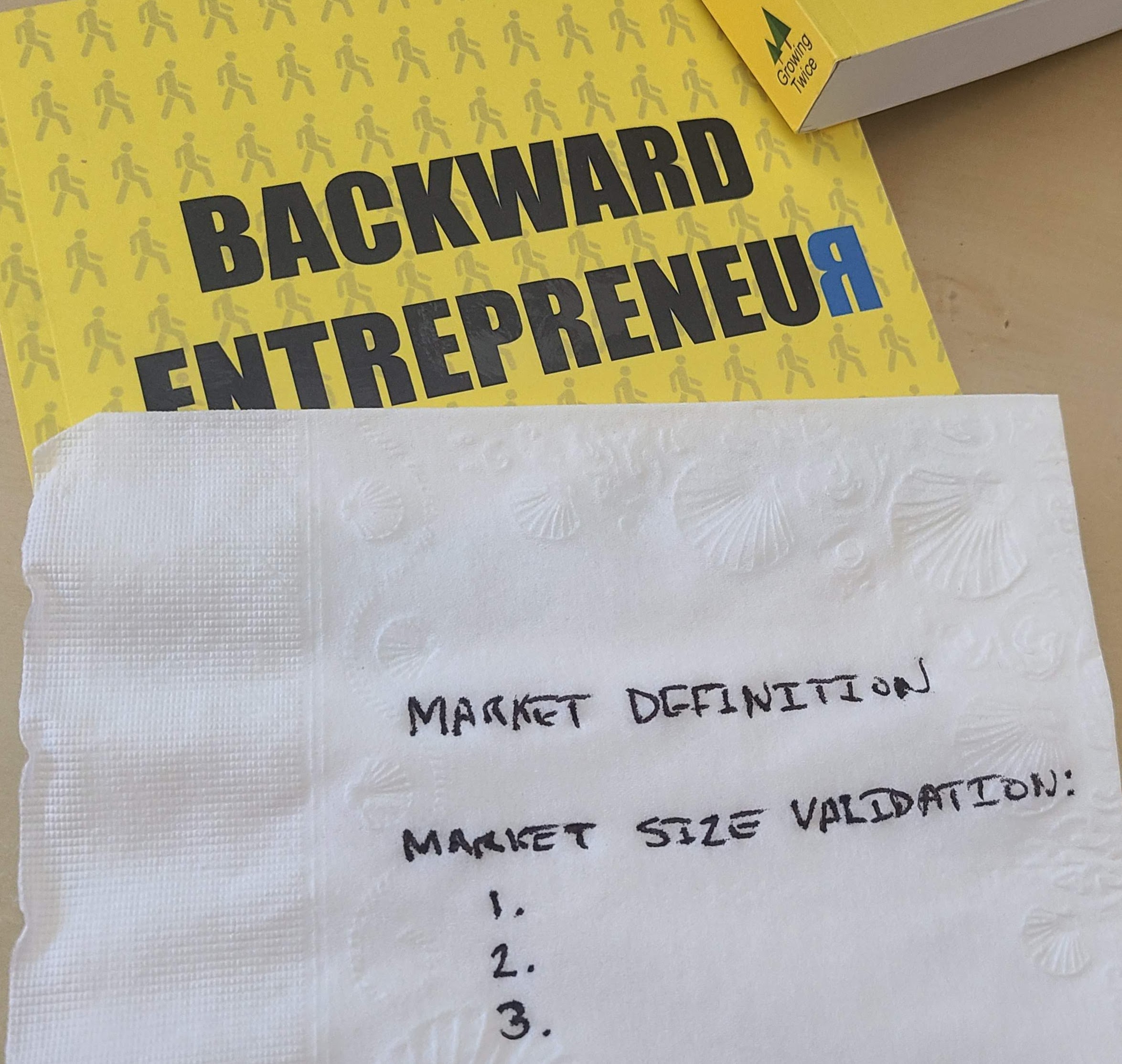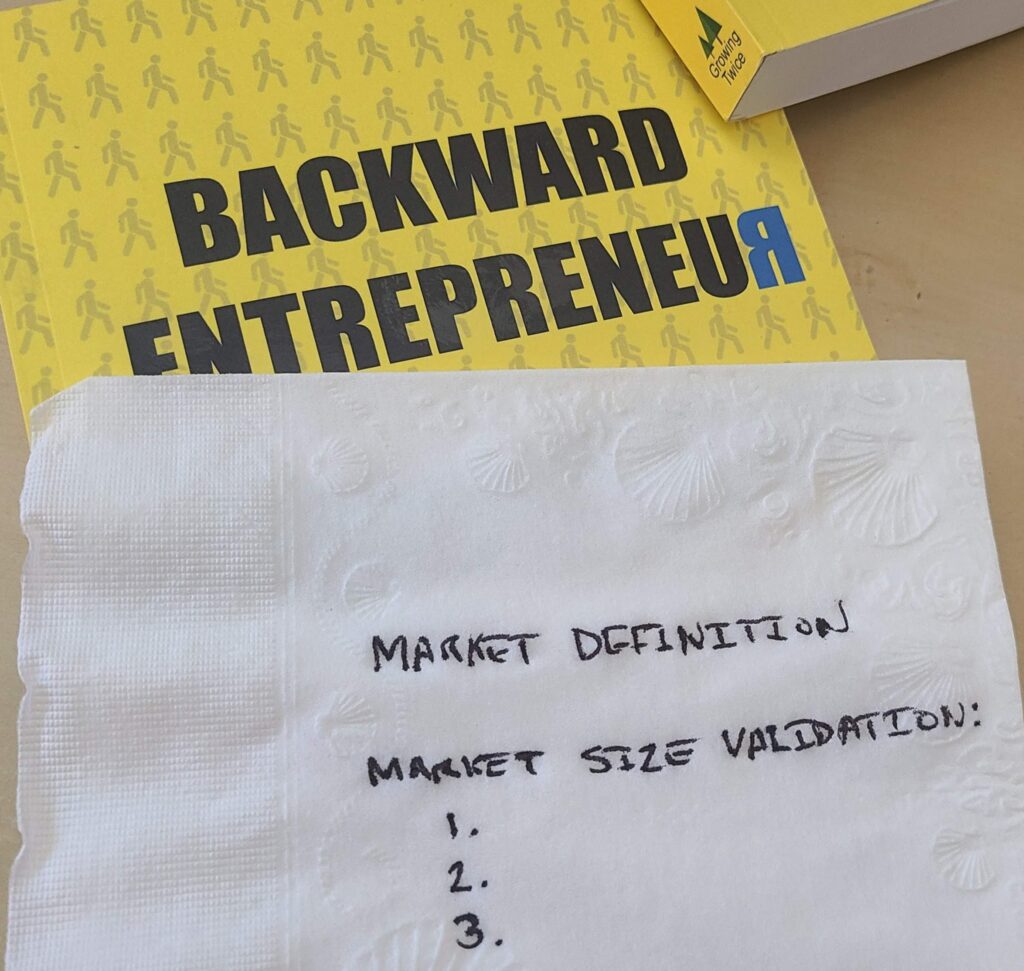
Why your product idea will fail and how to save it with a napkin
I teach market validation as a critical step before investing in a new product.
And I didn’t do it for the last patented product I created.
Hypocrisy, right?
I’ll tell that story in a moment. But the takeaway here is that a simple, napkin-level market validation can help you predict whether or not your product will die on the table or be snapped up by a hungry market.
A napkin-size validation helps us avoid common causes of product failure.
- Lack of reachable market
- Barriers to manufacturing or distribution
- Lack of market interest
- Lack of sustainability
- Value is not compelling
So to set ourselves up for success, there are two steps, and ALL should fit on one napkin.
Answer these for market definition:
- What defines the group who must have my product over all others?
- Are the majority of people in that group in enough pain or experiencing desires such that they can articulate them and actively seek solutions?
- Without your solution, what are these people doing to specifically solve for the pain?
Answer these for market size validation
- How many people must have what I do?
- How many can I reach with my resources?
- What is my average profit per sale?
- How many do I need to sell to sustain and grow?
- Is that a reasonable conversion rate?
Now I’m sharing this as what I hope is a useful overview. I cover more detail of this in my book, Backward Entrepreneur along with stories of how others have reacted to the results. But I will share the story of my failed product here.

The story of my failed product
My future son-in-law commented at the dinner table, “It’s too hard to get a patent.” I disagreed and said, “Come with me… we’ll invent something.”
Outside, I glanced around for something to invent and attached an empty cranberry juice bottle to a stick, filled the bottle partway with sand, and flippantly stated, “See, we have a dead blow trash compactor.:”
I thrust it into the trash bin. And then something unexpected happened.
The trash mashed to nearly the size of a pancake.
Now my future son-in-law knew I was being flippant to prove a point, and was politely playing along, but neither of us actually expected it to work so incredibly well. I mean it really crushed the trash to nearly nothing. Knowing no-one would buy a trash compactor on a stick, I applied for (and was awarded) a patent 9487927 for using granular damping in a compacting tool in the form of a hand borne dirt tamper.
Hooray. Everyone congratulated me with my new found wealth.
But I knew better. You see, I never intended to sell the tool. It was merely an object lesson to my son-in-law and to the interns studying how I build my primary businesses. And in that way it was successful.
But my friends kept pushing me to market it or at least to license it.
My instincts knew better, but I decided, “whatever, I’ll take it to the National Hardware Show in Las Vegas, and see if anyone disproves my assumption that there’s really no market for this thing. “
At our booth, most of the buyers for hardware stores looked at it, complimented it as superior, and confirmed, “I’ll never put it on my shelf though.” But it got even bigger: I was selected at the conference to go on stage with all the Home Depot execs and pitch the tool. Everyone loved it. Everyone agreed it was one of the simplest, most innovative things they’d seen at the marketing. I even got one exec to try it (Rules said they couldn’t on stage) and the shock on his face was all the audience needed to do a standing ovation.
When the clapping died down and the VPs were done complimenting the innovation, I bailed them out by saying, “Thanks, but you’ll never put this on your shelves, will you?” and they all smiled that smile of relief and agreed.
You see, that 12×12 spot on the shelf is expensive. And at the high-volume stores, it’s going to go to ONE product. Given the choice to fill it with a $38 product with a $25 margin over a $140 product with a $30 margin, you can bet the shelf space will go to the one product that will move in volume.

Now one good thing came from that conference. It turns out that a significant number of hardware stores DO want to order some of the higher-end products and one landscape tool company pursued licensing the patent. However, costs of manufacturing suppressed progress enough to back-burner any work on it.
So. Superior product? Yes, no question. The cost to get it to the customer with any type of sustainable margin was too high. So it lives on taking space in my garage, and as a gift to local landscapers (They absolutely LOVE it).
A market validation would have proven this well ahead of time, and stopped a wishful thinker from pouring a life savings into it.
So do your napkin level validation before you invest in your product.
If you already have your copy of Backward Entrepreneur, dive into Chapter 3, “Market Validation” and finish the napkin-size market validation exercise. Otherwise, I hope this overview is useful to you– even without the book– and helps you validate your product ideas.


